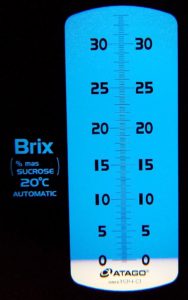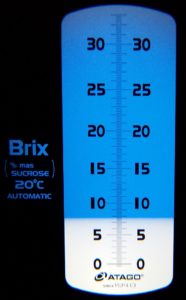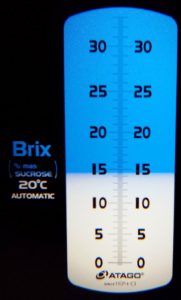There is a common misconception on many stamping plant floors, that the reading an operator observes on a diluted fluid solution via hand-held refractometer or digital BRIX meter is the actual concentration of the fluid being used. For water-based/water-containing fluids—this can be a serious misconception and it can lead to big consequences relating to fluid consumption, tool-life and quality control.
Water-based/containing stamping lubricants don’t commonly have a 1:1 relationship regarding observed meter readings and direct concentration as they have water content in their formulas. Remember that water is used to “zero” hand-held refractometers and BRIX meters—so it’s “net contribution” to the reading is also “zero”. This is very important as stamping fluids are not engineered using the same chemicals from one supplier to another. There can be very different concentrations of additives used in water-based lubricants and those additives themselves may also contain water. All of these subtle differences contribute to a more or less unique meter reading that corresponds to the actual concentration of the lubricant. By way of example—if you read 5.0 on your meter and that product has 70% water in its concentrate form, the conversion value at that dilution may likely be approximately 1.43. This would mean that your actual concentration of lubricant in your stamping process is not 5.0% – but actually 7.15%. These readings are typically unique for a product & often non-linear throughout the concentration ranges.
Why is this so important? When you use a water-based stamping lubricant for long periods of time—you may have a process spec that reflects set-up concentration at certain refractometer or BRIX readings. If you switch to a different water-based lubricant—those specs may not be applicable anymore—they may actually be detrimental to your process. This is because the refractometer or BRIX reading doesn’t tell you anything about the nature of the chemistry or its function—only that there is a certain level of concentrate or dissolved solids in the solution. Remember—a BRIX reading of approximately 43 can be exhibited by IRMCO FLUIDS 323-M80 and also “over the counter” cough syrup (cite IRMCO BRIX document).
One should regularly record the refractometer/BRIX readings of their water-based stamping fluids every time fresh solution is consumed—or at least every production shift. This is an important factor in your overall ISO and internal quality specs. It’s not enough just to write down a reading either—you should have a clear understanding of what that number is telling you. Be wary of recommendations to run processes within an arbitrary range of readings without actually knowing what those readings translate to. If you’re being told to run between a range of 12—14—that very likely will not translate to 12-14%. It could very easily translate to your using 32-38% concentration or roughly 1:1.75 ratio.
An educated customer is not only a good customer—they’re a safe customer.
* Top image shows “zeroed” meter reading. Middle and bottom images represent two different lubricants at the same dilution ratio.




